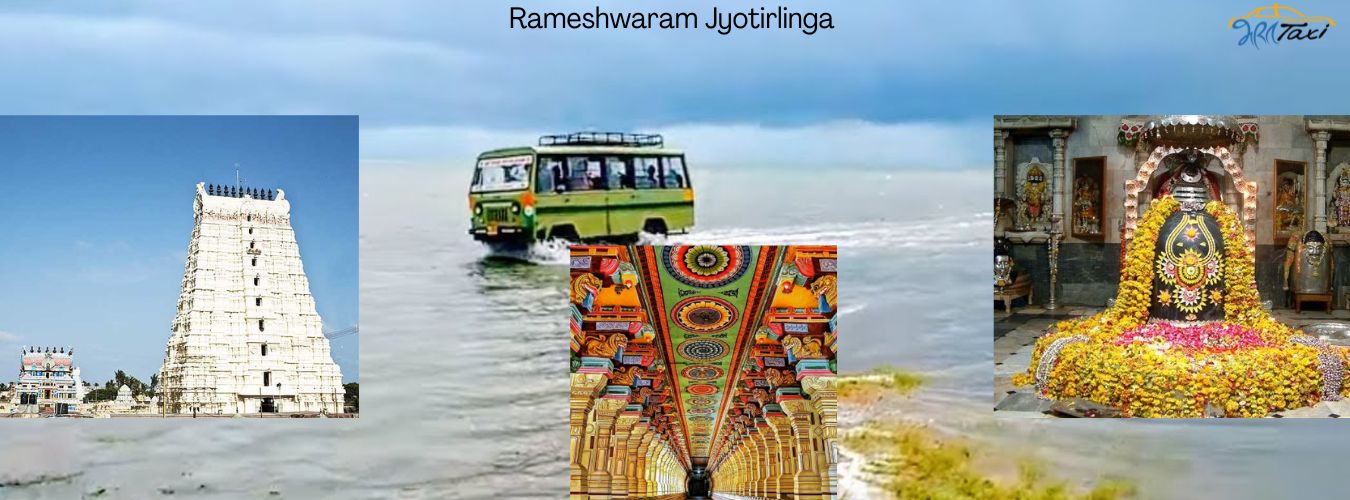Last Updated on July 14, 2024 by admin
Rameshwaram is a religious town on the southern coast of Tamil Nadu. It is also home to one of the most famous jyotirlingas of India, which is renowned for being the sacred home of Lord Shiva. Built during the rise of the 12th century by the ruling dynasty of Dravid, you will find excellent Dravidian architectural skills. According to the legend, Lord Rama did the coronation, and thus, the temple got its name, Rameshwaram. The huge Nandi of 108 sq. feet is established here per tradition.
The most spectacular feature of the temple is that it has the longest corridor among all religious places in India. It is standing tall, with over 1200 pillars supporting this ancient structure. Millions of visitors visit Rameshwaram Jyotirlinga per year from all over the world. The taxi services in this city flourish day and night for tourists. Apart from the local taxi drivers, other cab service companies provide their services online.
Read More: Taxi Booking on the Ardh Kumbh Festival in Haridwar
Historical Overview of Rameshwaram Jyotirlinga
Several exciting stories roam the corridors of the temple. According to legend, Lord Ram, the seventh incarnation of Lord Vishnu, has done penance for the sin of killing a Brahman. It is also where Lord Ram built the bridge of rocks to cross the sea. As a part of the tradition, only Hindu pilgrims have permission to enter the Ramanathaswamy temple premises. Lord Ram offered prayers to Lord Shiva before finally going to battle.
1. The Penance of Lord Ram
The Ramanathaswamy Temple takes you away from mythology and historical significance. According to ancient scriptures, Lord Ram, the seventh incarnation of Lord Vishnu, performed penance at this very site to atone for the sin of killing a Brahman. This act of penance is a pivotal event in the Ramayana, highlighting Lord Ram’s adherence to dharma and his devotion to righteousness. The penance involved intense prayers and rituals to seek forgiveness and cleanse his soul of the sin associated with the slaying of Ravana, who was a Brahmin by birth.
2. The Construction of Ram Setu
Another significant legend associated with the Ramanathaswamy Temple is the construction of Ram Setu, a bridge of rocks built by Lord Ram and his army of Vanaras (monkeys) to cross the sea to Lanka. This bridge, also known as Adam’s Bridge, is believed to stretch from Rameshwaram to the Sri Lankan coast. The creation of Ram Setu is an extraordinary feat, symbolizing the determination and divine assistance that Lord Ram received in his quest to rescue his wife, Sita, from the demon king Ravana. This mythical bridge continues to be a subject of fascination and reverence among devotees and scholars alike.
3. Sanctity of the Temple Premises
Maintaining the sacredness and reverence of the Ramanathaswamy Temple is a long-standing tradition. The temple’s premises are exclusively accessible to Hindu pilgrims, preserving the site’s sacredness. This tradition underscores the temple’s spiritual significance and role as a sanctified space for worship and reflection. The exclusivity also reflects the deep cultural and religious values embedded within the temple’s history, offering devotees a calm environment for their spiritual practices.
4. Lord Ram’s Prayers to Lord Shiva
One of the most intense aspects of the Ramanathaswamy Temple’s history is the worship of Lord Shiva by Lord Ram. Before starting his epic battle against Ravana, Lord Ram prayed to Lord Shiva at this temple. This act of devotion and reverence underscores the deep spiritual connection between the deities and the significance of the temple as a site of divine convergence. The prayers of Lord Ram to Lord Shiva are believed to have committed to strength and blessings upon him, ensuring his victory in the battle. This historical and spiritual connection adds a layer of profound significance to the temple, making it a revered destination for pilgrims seeking divine blessings.
Book a Taxi: Taxi Service in Rameshwaram
How to Reach?
Rameshwaram witnesses a massive crowd of devotees, especially during July and August. To accommodate the surge of pilgrims, it is advisable to make travel arrangements in advance. Several online cab service companies operate in Rameshwaram, offering convenient and reliable taxi booking facilities over the Internet. These services ensure visitors can travel to and from the temple without hassle, allowing them to focus on their spiritual journey.
Nearby Places to Explore
During your trip to the Ramanathaswamy Temple, there are several nearby attractions that you can explore:
- Sri Ramanathaswamy Temple: The main temple itself is a must-visit, with its magnificent architecture and spiritual ambience.
- Agnitheertham: This sacred sea is believed to purify one’s sins near the temple.
- Gandamadana Parvatham: A hillock that offers a panoramic view of Rameshwaram and is home to a temple with Lord Ram’s footprints.
- Sugreevar Temple: Dedicated to Sugreeva, the monkey king and ally of Lord Ram, this temple is a testament to their legendary friendship.
- Satchi Hanuman Temple: Commemorates the spot where Hanuman delivered the good news of Sita’s location to Lord Ram.
Rameshwaram is well connected to major cities such as Madurai (148 kilometres away) and Thanjavur (169 kilometres away). For those looking to extend their journey, the scenic hill station of Munnar (261 kilometres away), the coastal town of Kanyakumari (239 kilometres away), and the capital city of Thiruvananthapuram (273 kilometres away) are also accessible from Rameshwaram.

